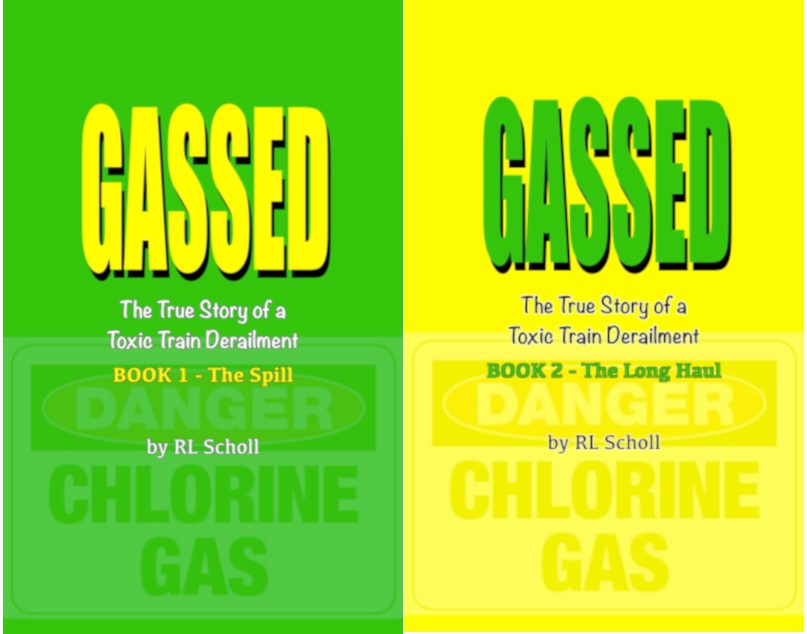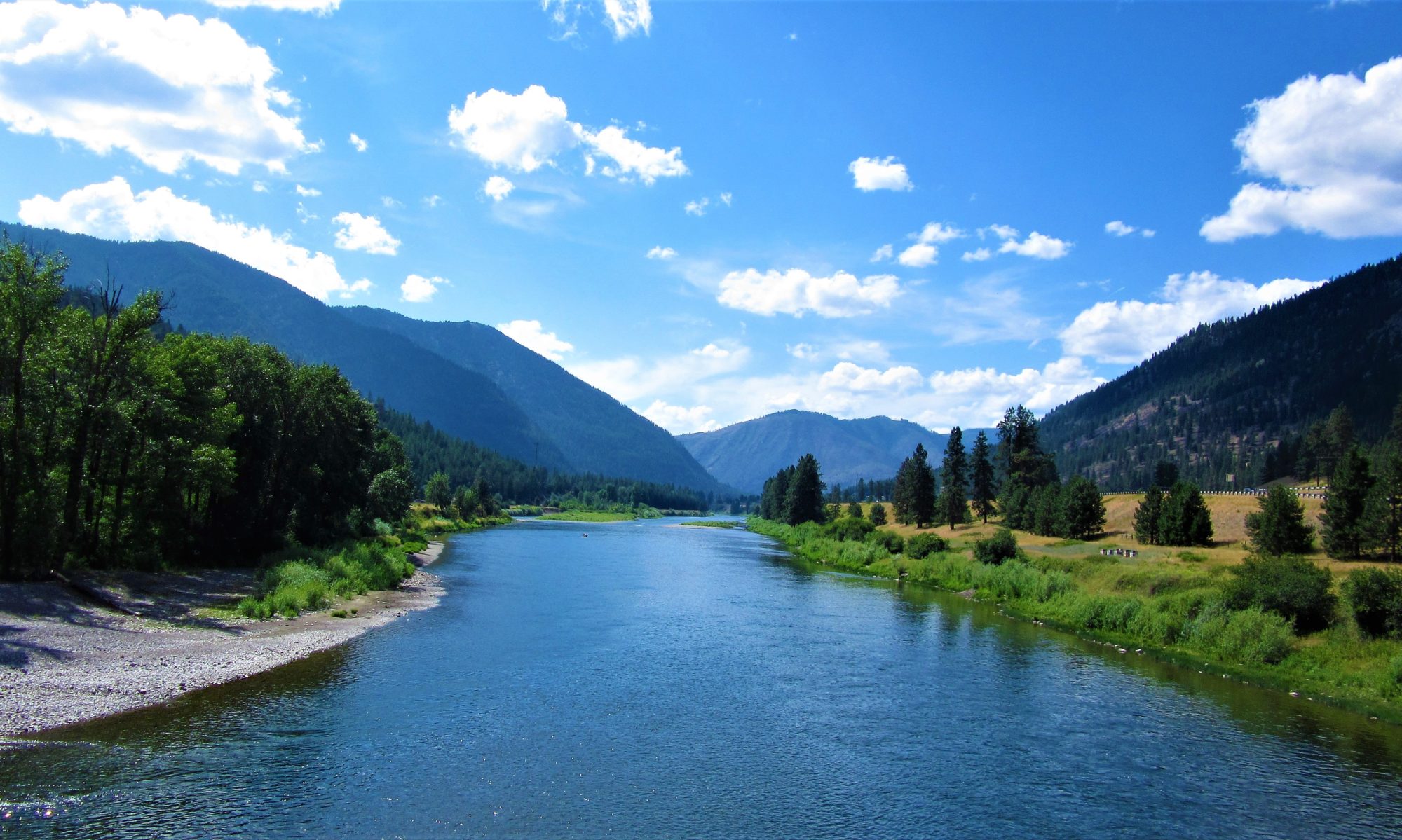Welcome to Alberton, Montana: Anatomy of a Toxic Train Wreck. A new abridged version of the Alberton chlorine spill story is now available on Amazon as of December 21, 2022. GASSED: The True Story of a Toxic Train Derailment is a two-book series available both in paperback and e-book. Book 1 The Spill, and Book 2 The Long Haul.

On April 11, 1996, a train derailed outside Alberton, Montana, in the dead of night, releasing a massive cloud of chlorine gas. GASSED: The True Story of a Toxic Train Derailment is a two-book series about the derailment and the life-changing aftermath for many Montanan residents. BOOK 1 – The Spill reveals the crisis of panicked townsfolk fleeing a toxic cloud, and the ensuing struggle to patch the largest-ever breach of a liquid chlorine tank. Hundreds of people experience acute injury, with one immediate death. RL Scholl raises critical questions about the emergency response and the serious controversies that divide the community. BOOK 2 – The Long Haul chronicles the struggles of chlorine exposure survivors, as many suffer from chronic illness that they were told they shouldn’t have. For those who seek justice in the courtroom, the evidence raises a disturbing question: was this devastating derailment an unavoidable accident or the result of negligence? Scholl’s riveting case study illuminates the physical, psychological and financial devastation of a toxic mass exposure that could happen anywhere, anytime. Readers with an interest in Montana history, emergency response to toxic spills, chronic health effects from mass chlorine exposure, and environmental justice issues will find this book a rich resource.
The original full e-book is still available at Amazon:
Alberton, Montana: Anatomy of a Toxic Train Wreck
Book Overview of GASSED: The True Story of a Toxic Train Derailment
Book 1 – The Spill
Part I – The Spill: An MRL train derails near Alberton, Montana, resulting in tank ruptures including chlorine gas. One thousand people are evacuated for 17 days as workers struggle to contain the chlorine leak.
Book 2 – The Long Haul
Part II – Aftermath: When spill victims return home after the 17-day evacuation, many residents report chemical odors that trigger symptoms. Some people find it intolerable to return home.
Part III – The Long Haul: Having been told to expect complete recovery, many spill victims instead experience chronic illness. Some embark on a journey to get medical and financial help from the government, and answers to questions about their exposures.
Part IV – Light at the End of the Tunnel: Having received no meaningful help from local, state and federal agencies, organized spill victims petition the National EPA Ombudsman, who agrees to an investigation and ultimately a public hearing.
Part V – Derailed: The National EPA Ombudsman, and his Alberton chlorine spill case, face jeopardy as the EPA seeks to greatly weaken his capacity to conduct investigations into EPA Superfund sites.
Part VI – The Last Train: This section examines Alberton chlorine spill litigation and the main two frontlines of medical injury and liability, culminating in the Austin v. MRL trial. This ends the narrative arc of the book.
Appendix – Testimony: Alberton spill victims speak to the chronic illness they have experienced.
I hope you will find interesting and helpful this detailed account of the catastrophic 1996 train derailment and chlorine release outside the small railroad town of Alberton, Montana. This book chronicles the saga of the spill, evacuations and the response, as well as the aftermath for the injured victims, many of whom sought answers to the chronic illness that forever changed their lives.
The western edge of Montana suggests the profile of a face, with Alberton in the “eye,” deep in the folds of the Rocky Mountains. Thirty miles to the east lies Missoula, the second-largest city in Montana. The 1996 derailment punctured a tank containing 180,000 pounds of liquid chlorine. Chlorinated gases soon spread in all directions of the narrow mountain valley, overtaking nearby sleeping communities. The derailment occurred on the border of sparsely populated and relatively poor Mineral County–home to Alberton–and much larger Missoula County. But the gas knew no boundaries.


